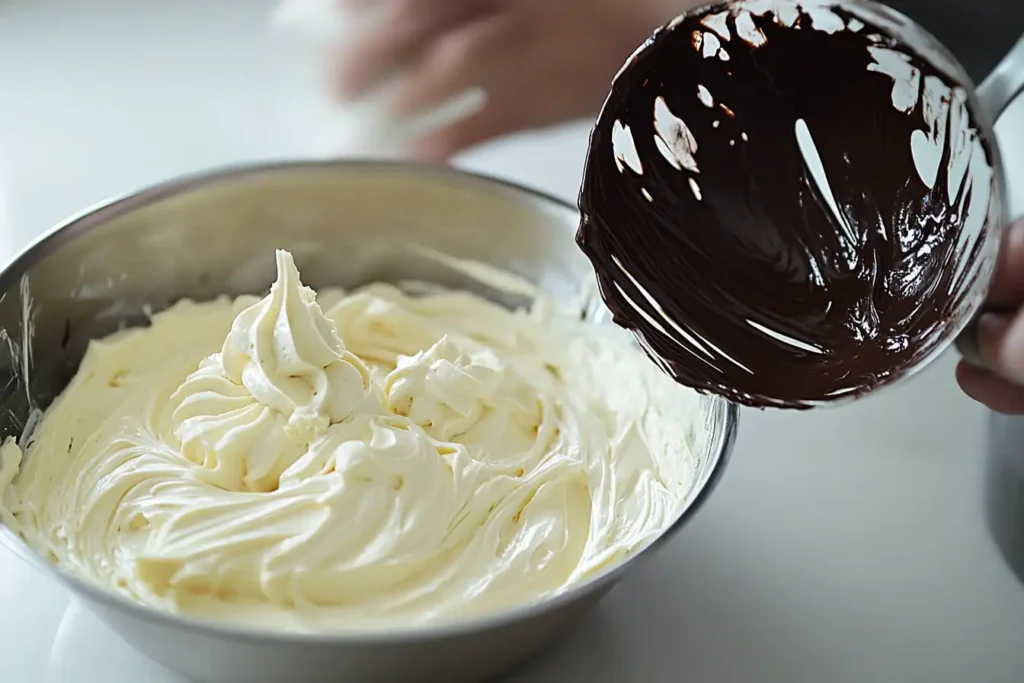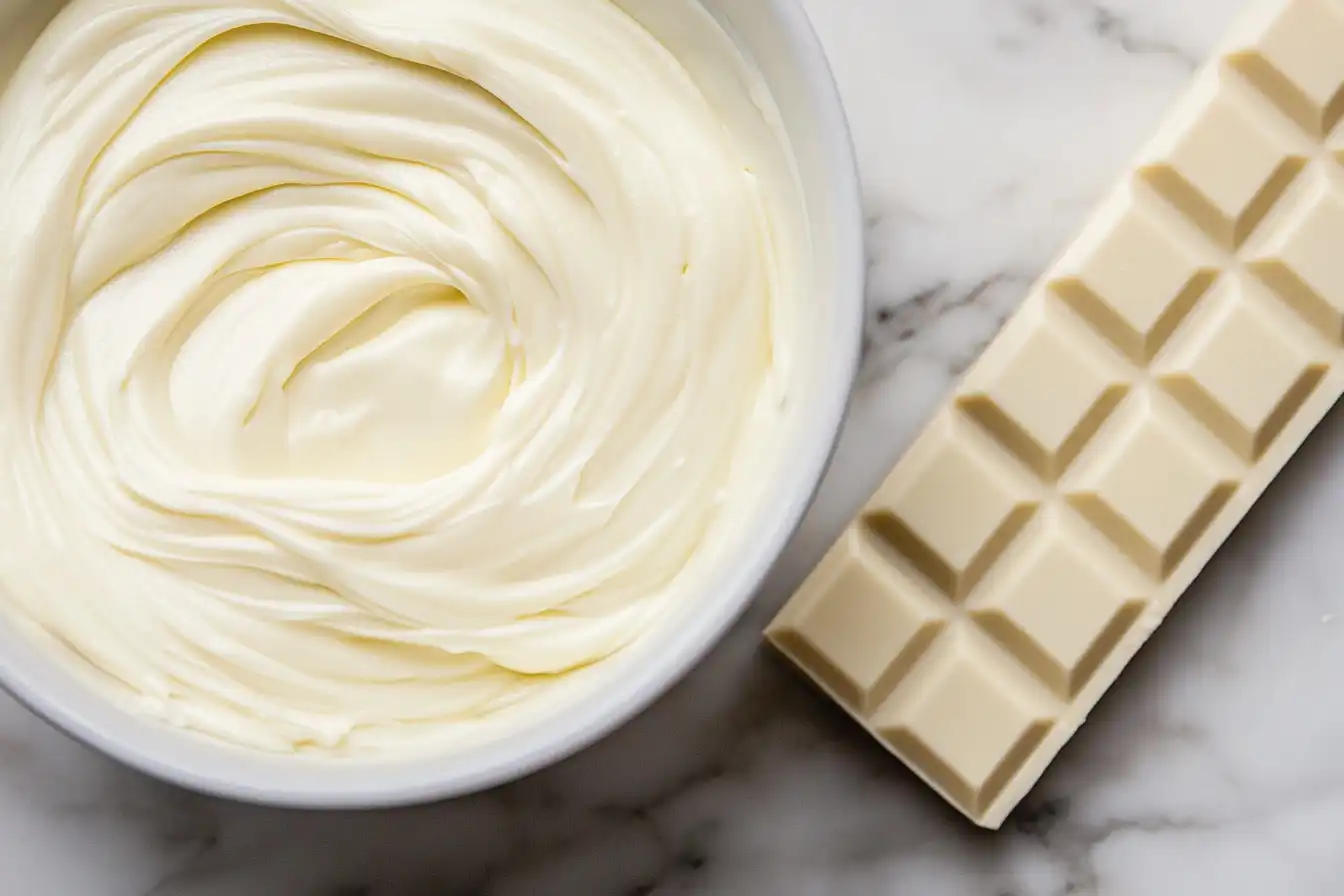White chocolate ganache can be a tricky treat to master. While it’s often praised for its creamy texture and delightful versatility, there’s nothing more frustrating than realizing it just won’t set as expected. Whether you’re making it for cake coating, filling, or as a decadent topping, understanding what’s gone wrong is the first step toward fixing the issue.
In this article, we’ll uncover the reasons why your white chocolate ganache isn’t hardening and share expert tips to troubleshoot and perfect your recipe. We’ll explore common problems like the wrong chocolate-to-cream ratio, improper melting, and environmental factors that may sabotage your efforts. Stick around for actionable solutions and FAQs that’ll have you creating flawless ganache in no time.
Understanding White Chocolate Ganache
What Is White Chocolate Ganache?
White chocolate ganache is a luxurious mixture made from white chocolate and cream. Unlike traditional chocolate ganache, this sweet concoction is prized for its mild flavor and velvety finish, making it a popular choice for both home bakers and professional pâtissiers. Depending on its consistency, white chocolate ganache can be used as a glaze, frosting, or filling for desserts.
The essential balance between cream and white chocolate determines the final consistency, which can range from soft and spreadable to firm and sliceable. Its versatility is both a strength and a challenge getting it to harden just right requires a bit of finesse.
Differences Between White Chocolate and Regular Chocolate Ganache
When it comes to making ganache, white chocolate has unique characteristics that set it apart from dark or milk chocolate. It contains a higher percentage of cocoa butter but lacks cocoa solids, giving it a creamy texture but making it more temperature-sensitive.
Moreover, white chocolate ganache requires a higher chocolate-to-cream ratio than its counterparts because it’s naturally softer and more prone to becoming runny. This delicate balance means even small mistakes in measurement or technique can lead to issues with hardening.
By understanding these nuances, you’ll have a better chance of crafting a white chocolate ganache that not only tastes amazing but also sets up perfectly for your desserts.
Common Reasons Your Ganache Isn’t Hardening
Incorrect Chocolate-to-Cream Ratio
One of the most common culprits behind a ganache that won’t set is an incorrect chocolate-to-cream ratio. White chocolate, being softer than dark or milk chocolate, requires a higher proportion of chocolate to achieve the desired firmness. For a firm ganache, you’ll typically need a 3:1 ratio of white chocolate to cream. If you’re making a pourable glaze or a softer filling, the ratio can be adjusted to 2:1.
If your ganache is runny or refuses to harden, chances are the cream outweighs the chocolate. Fixing this involves melting additional white chocolate into the mixture, allowing it to cool, and then checking the consistency.
Remember, precise measurement is key. Even small errors can throw off the texture, so always use a kitchen scale for accuracy.
Quality and Type of White Chocolate Used
Did you know that not all white chocolates are created equal? Low-quality white chocolate often contains less cocoa butter and more fillers like vegetable oils, which can prevent your ganache from setting properly.
For the best results, choose high-quality couverture white chocolate with a cocoa butter content of at least 30%. This ensures the necessary structure and stability. Compound chocolates, while cheaper, lack the creamy richness needed for a ganache that both tastes great and hardens well.
Overheating or Improper Melting
If you’ve ever wondered, “Why is my white chocolate ganache not hardening?”, overheating is often to blame. White chocolate is notoriously heat-sensitive, and when melted improperly, its cocoa butter can separate, resulting in a greasy or grainy ganache that refuses to set.
To avoid this, always melt your white chocolate gently. Use a double boiler or microwave in short bursts, stirring frequently. If the ganache looks oily or separated, try whisking it vigorously to bring it back together, but prevention is always better than cure.
Environmental Factors Affecting Hardening
Sometimes, the environment plays a sneaky role in sabotaging your ganache. If the room is too warm or humid, your ganache might stay soft, even if everything else is done right. White chocolate ganache is particularly sensitive to temperature, so aim for a cool, dry area to let it set.
Refrigerating your ganache can help in extreme cases, but be careful not to overdo it, as rapid cooling might cause it to become grainy.
Techniques to Fix White Chocolate Ganache Issues

How to Adjust a Runny Ganache
If your ganache refuses to firm up, don’t panic there are ways to save it. The simplest solution is to add more white chocolate to the mix. Melt additional chocolate separately, then gradually whisk it into the runny ganache until the desired consistency is achieved. Let the mixture cool completely to see if it hardens before making further adjustments.
Another quick fix is to chill the ganache. Place it in the fridge for 15–20 minutes, stirring occasionally. This can help it firm up temporarily, though structural issues may still need addressing.
Incorporating Stabilizers for Better Hardening
When a ganache won’t set, stabilizers like gelatin, cornstarch, or powdered sugar can come to the rescue. For example, a teaspoon of gelatin dissolved in warm water can provide additional firmness without altering the flavor. Similarly, cornstarch can thicken the ganache, but it must be whisked in gradually to avoid lumps.
Use stabilizers sparingly, as they can change the texture if overused. This method is best for cases where you need the ganache to stay firm for decorating or sculpting purposes.
Reheating and Reworking Ganache
Sometimes, reheating can help salvage a poorly set ganache. Gently warm the mixture over low heat while stirring continuously. Be cautious, though overheating can cause the chocolate to seize, making things worse.
Once warmed, let the ganache cool naturally at room temperature before refrigerating. Patience is essential here, as rushing the process can lead to uneven textures.
With these techniques, you’ll no longer have to ask, “Why is my white chocolate ganache not hardening?”. Whether it’s adjusting ratios, adding stabilizers, or tweaking the temperature, you can rescue your ganache and ensure it’s ready for any dessert.
Tips for Perfect White Chocolate Ganache Every Time
Measuring Ingredients Accurately
Getting the perfect white chocolate ganache starts with precision. Measuring your ingredients accurately is crucial, as even minor discrepancies can lead to a ganache that refuses to set. Use a digital kitchen scale instead of relying on cups or tablespoons. For white chocolate, precision ensures you achieve the correct chocolate-to-cream ratio for your desired consistency.
If you’re wondering, “Why is my white chocolate ganache not hardening?”, the answer may lie in inconsistent measurements. Keep your tools clean and avoid mixing in ingredients on a whim it’s better to measure first and tweak later.
Controlling Temperature Throughout the Process
Temperature control can make or break your ganache. White chocolate is finicky and can seize or separate when exposed to high heat. Always melt the chocolate gently using a double boiler or in a microwave at short intervals, stirring frequently.
Once your ganache is mixed, allow it to cool at room temperature before refrigerating. Sudden shifts in temperature can affect the texture, so avoid placing hot ganache directly into the fridge. A bit of patience goes a long way toward achieving a smooth and creamy result.
Testing and Adjusting Consistency During Preparation
Don’t wait until the end to test your ganache. While still warm, assess its consistency by dipping a spoon or spatula into the mixture. If it’s too thin, consider adding more white chocolate. For thicker ganache, adjust with small amounts of warm cream.
These proactive steps can help you sidestep issues, ensuring your ganache is perfect from the start.
For more delicious recipes and dessert tips, check out other articles on Favorite Flavor Recipes.
Frequently Asked Questions (FAQs)
Why does my white chocolate ganache stay soft even after refrigeration?
A soft ganache, even after chilling, often points to an incorrect chocolate-to-cream ratio or low-quality white chocolate. Opt for couverture white chocolate with high cocoa butter content and ensure you’re using a 3:1 ratio for firmer ganache.
Can I use a microwave to melt white chocolate for ganache?
Yes, but be careful! White chocolate is heat-sensitive and can scorch easily. Melt it in 15-second intervals, stirring between each round, to prevent overheating.
What’s the best way to store leftover ganache?
Store leftover white chocolate ganache in an airtight container in the fridge for up to a week. To reuse, gently reheat it over low heat or let it come to room temperature for spreading consistency.
How long does white chocolate ganache take to harden?
At room temperature, ganache can take 2–4 hours to set. For quicker results, refrigerate it for 30–60 minutes. Keep in mind that environmental factors like humidity and room temperature can influence hardening time.
By addressing these common questions, you’ll have fewer reasons to ask, “Why is my white chocolate ganache not hardening?” and more confidence in creating this delightful dessert staple.
Related Troubleshooting Tips for Chocolate Ganache
Why Chocolate Ganache Sometimes Becomes Grainy
A grainy texture in ganache can be frustrating, especially if you’re aiming for a silky finish. This issue often arises when the white chocolate is overheated or cooled too quickly. High heat causes the cocoa butter to separate, while rapid cooling can create uneven crystals in the mixture.
If your ganache turns grainy, try reheating it gently over a double boiler while stirring constantly. Adding a small amount of warm cream can also help smooth out the texture. However, prevention is the best strategy always melt your white chocolate slowly and mix thoroughly.
Can Adding Liquid Ingredients Affect Hardening?
Adding liquid ingredients, such as flavor extracts or alcohol, can weaken the structure of your ganache and make hardening more difficult. If you’re wondering, “Why is my white chocolate ganache not hardening?”, check if you’ve introduced too much liquid.
To counter this, use highly concentrated extracts sparingly or add a bit more melted chocolate to restore the balance. Stabilizers, like gelatin or powdered sugar, can also help firm up ganache that’s been softened by additional liquids.
When experimenting with flavors, keep adjustments minimal to preserve the original chocolate-to-cream ratio. These small tweaks can save your ganache from being too soft.
Conclusion and Final Thoughts
Creating a flawless white chocolate ganache requires patience and attention to detail, but it’s entirely achievable with the right approach. From understanding the importance of a proper chocolate-to-cream ratio to learning how to troubleshoot issues like overheating or grainy textures, each step builds your confidence in mastering this versatile treat.
If you’ve ever asked, “Why is my white chocolate ganache not hardening?”, you now know that factors like ingredient quality, temperature control, and external conditions all play a role. By following the tips and techniques outlined in this guide, you’ll not only rescue your current ganache but also avoid similar problems in the future.
Remember, practice makes perfect. As you continue to refine your technique, you’ll discover the joy of working with white chocolate and creating desserts that look and taste amazing. Don’t be afraid to experiment with flavors or textures, as long as you keep the fundamentals in mind.
For more baking inspiration and helpful recipes, explore other guides on Favorite Flavor Recipes. Whether you’re a beginner or a seasoned baker, there’s always something new to learn in the world of sweet treats!

